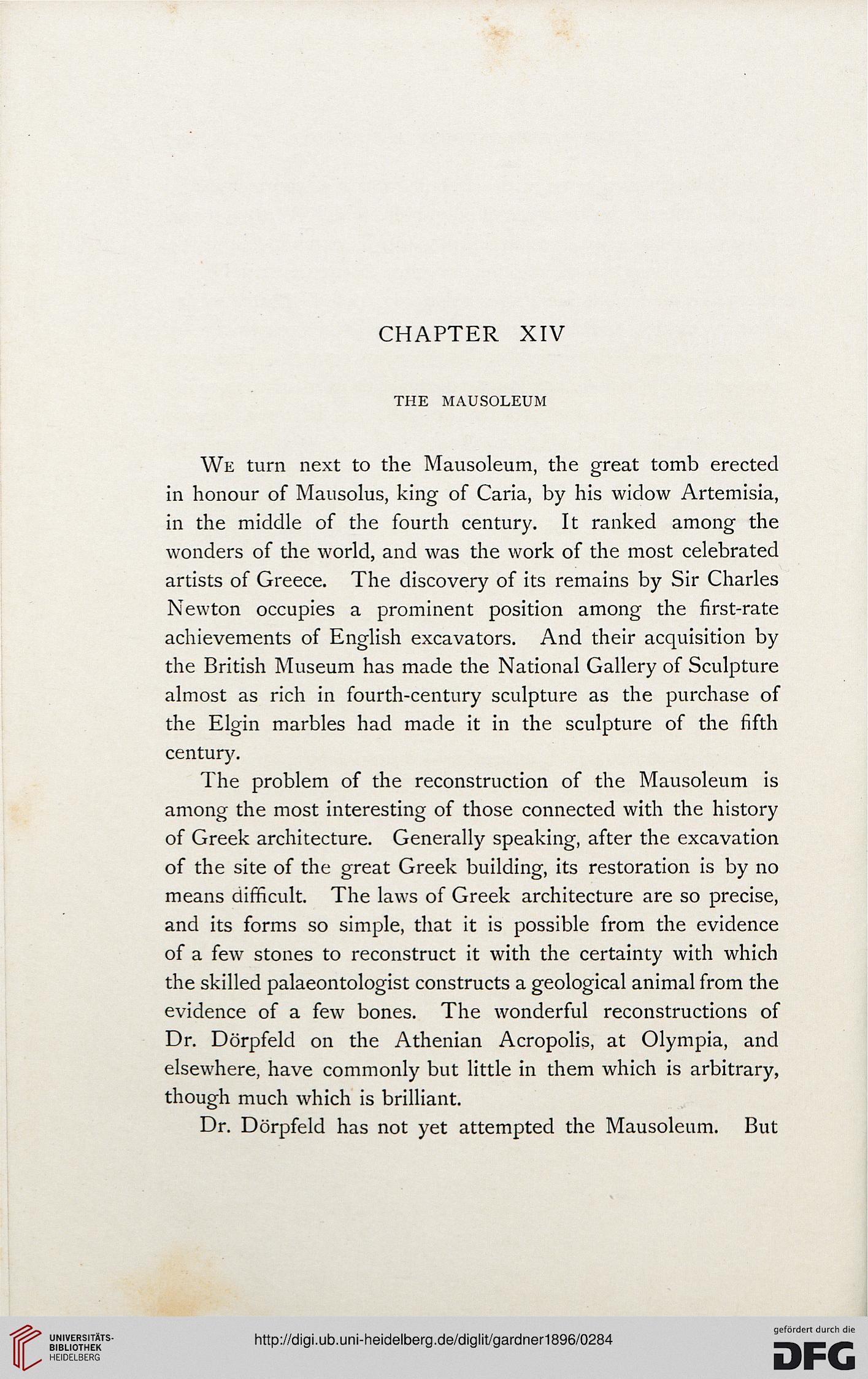CHAPTER XIV
THE MAUSOLEUM
We turn next to the Mausoleum, the great tomb erected
in honour of Mausolus, king of Caria, by his widow Artemisia,
in the middle of the fourth century. It ranked among the
wonders of the world, and was the work of the most celebrated
artists of Greece. The discovery of its remains by Sir Charles
Newton occupies a prominent position among the first-rate
achievements of English excavators. And their acquisition by
the British Museum has made the National Gallery of Sculpture
almost as rich in fourth-century sculpture as the purchase of
the Elgin marbles had made it in the sculpture of the fifth
century.
The problem of the reconstruction of the Mausoleum is
among the most interesting of those connected with the history
of Greek architecture. Generally speaking, after the excavation
of the site of the great Greek building, its restoration is by no
means difficult. The laws of Greek architecture are so precise,
and its forms so simple, that it is possible from the evidence
of a few stones to reconstruct it with the certainty with which
the skilled palaeontologist constructs a geological animal from the
evidence of a few bones. The wonderful reconstructions of
Dr. Dorpfeld on the Athenian Acropolis, at Olympia, and
elsewhere, have commonly but little in them which is arbitrary,
though much which is brilliant.
Dr. Dorpfeld has not yet attempted the Mausoleum. But
THE MAUSOLEUM
We turn next to the Mausoleum, the great tomb erected
in honour of Mausolus, king of Caria, by his widow Artemisia,
in the middle of the fourth century. It ranked among the
wonders of the world, and was the work of the most celebrated
artists of Greece. The discovery of its remains by Sir Charles
Newton occupies a prominent position among the first-rate
achievements of English excavators. And their acquisition by
the British Museum has made the National Gallery of Sculpture
almost as rich in fourth-century sculpture as the purchase of
the Elgin marbles had made it in the sculpture of the fifth
century.
The problem of the reconstruction of the Mausoleum is
among the most interesting of those connected with the history
of Greek architecture. Generally speaking, after the excavation
of the site of the great Greek building, its restoration is by no
means difficult. The laws of Greek architecture are so precise,
and its forms so simple, that it is possible from the evidence
of a few stones to reconstruct it with the certainty with which
the skilled palaeontologist constructs a geological animal from the
evidence of a few bones. The wonderful reconstructions of
Dr. Dorpfeld on the Athenian Acropolis, at Olympia, and
elsewhere, have commonly but little in them which is arbitrary,
though much which is brilliant.
Dr. Dorpfeld has not yet attempted the Mausoleum. But




